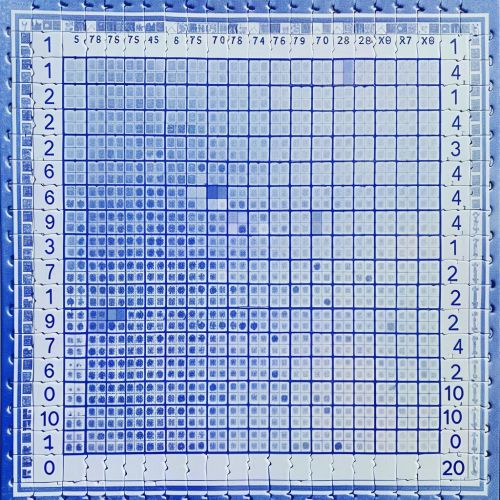Picross
Overview
Picross, also known as Nonograms, Griddlers, Paint-By-Numbers, or Hanjie, is a puzzle game that originated in Japan. The game is a form of puzzle solving where the player is given a grid of squares, which they must fill in according to the numbers given at the side of the grid to reveal a hidden picture. The numbers represent the lengths of the groups of consecutive filled squares in each row or column. Each group of filled squares must be separated by at least one blank square. The game is typically played on a grid of varying sizes, the most common being 5x5, 10x10, 15x15, or 20x20, but larger grids are also possible.


History
The game was first introduced in Japan by the magazine Nikoli Co., Ltd. in 1987 under the name Non Ishida. The name "Nonogram" was later coined by The Sunday Telegraph, a UK newspaper, when they started publishing the puzzles in 1990. The name "Picross" is a portmanteau of "Picture" and "Crossword," which was used by Nintendo when they released a series of Picross games for their handheld gaming systems.
Gameplay
The gameplay of Picross involves filling in squares on a grid based on the numbers provided on the sides of the grid. The numbers indicate the number of consecutive squares that should be filled in for each row or column. For example, a clue of "4 2 1" would mean there are sets of four, two, and one filled squares, in that order, with at least one blank square between each group.
The game starts with a blank grid, and the player must use logic and deduction to determine which squares to fill in. The game is won when the hidden picture is correctly revealed. In some versions of the game, a time limit or penalty for incorrect guesses may be imposed.
Variations
There are several variations of Picross, including 3D Picross, Color Picross, and Multi-Picross.
3D Picross, also known as Picross 3D, extends the game into three dimensions. Instead of filling in squares on a grid, players fill in cubes in a 3D grid to create a 3D image.
Color Picross introduces color into the game, with the numbers indicating not only the number of consecutive squares to be filled in, but also the color those squares should be.
Multi-Picross involves larger grids and multiple players. Each player is given a different set of clues and must work together to complete the puzzle.
Strategy
Solving a Picross puzzle involves a combination of logic, deduction, and sometimes guesswork. The simplest strategy is to start with the largest numbers, as these give the most information about which squares to fill in. From there, players can use the process of elimination and deduction to fill in the remaining squares. More advanced strategies involve looking at the intersection of rows and columns to determine which squares can be filled in.
In Popular Culture
Picross has gained popularity worldwide, with numerous online and offline versions available. The game has been featured in various video game consoles, mobile apps, and websites. Nintendo, in particular, has released a series of Picross games for their handheld gaming systems, including the Game Boy, Nintendo DS, and Nintendo Switch. The game has also been featured in competitive puzzle solving, with national and international Picross competitions taking place.
